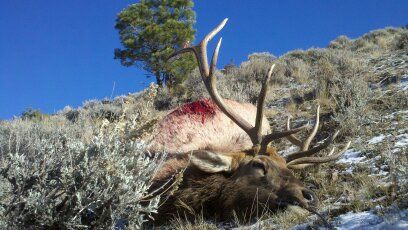So i have a question for all of you long distant hunters.
All things being equal (you have the tools and skill to take long distant shots on game). How do you find your game after you made the shot (assuming one and done). I was thinking on this a couple of days ago, I have never taken long shots on game I have enough restraint to know I don't have the tools and skill to be ethical at those ranges. But for the hunters who do, what is the method you employ to find them. I was thinking shots at or greater than 600yds, at that distantance it is a lot of ground for you cover to just to get to the spot where you 1. shot your game 2. estimate that they are in the area if they didn't run too far. This may sound silly but how do you not get lost in the mountains crossing drainages and rough terrain trying to locate your deer/Elk. In my view it is quite easy for you to be in one spot looking for your trophy while your trophy is dead 100yds the oppsite direction. I am not trying to start a discussion on ethics of hunting their is a time and place for that, just trying to learn something new.
Thanks, cross
All things being equal (you have the tools and skill to take long distant shots on game). How do you find your game after you made the shot (assuming one and done). I was thinking on this a couple of days ago, I have never taken long shots on game I have enough restraint to know I don't have the tools and skill to be ethical at those ranges. But for the hunters who do, what is the method you employ to find them. I was thinking shots at or greater than 600yds, at that distantance it is a lot of ground for you cover to just to get to the spot where you 1. shot your game 2. estimate that they are in the area if they didn't run too far. This may sound silly but how do you not get lost in the mountains crossing drainages and rough terrain trying to locate your deer/Elk. In my view it is quite easy for you to be in one spot looking for your trophy while your trophy is dead 100yds the oppsite direction. I am not trying to start a discussion on ethics of hunting their is a time and place for that, just trying to learn something new.
Thanks, cross

